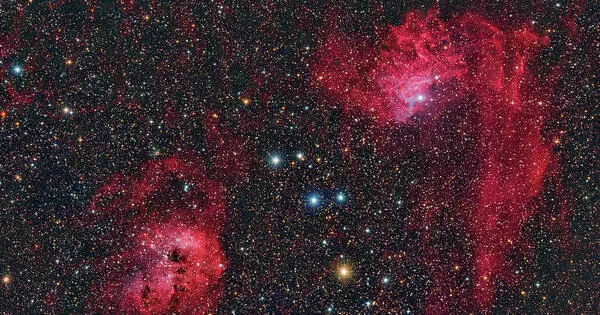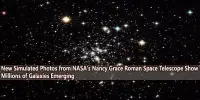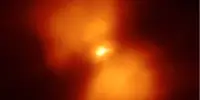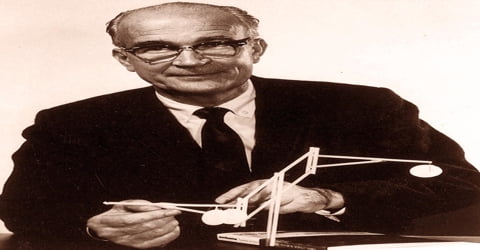IC 405 (also known as the Flaming Star Nebula, SH 2-229, or Caldwell 31) is an emission and reflection nebula in the constellation Auriga, north of the celestial equator, which surrounds the bluish, irregular variable star AE Aurigae. It is approximately 1,500 light-years away from Earth. It has a magnitude of +6.0. It has the coordinates RA 05h 16.2m dec +34° 28′. The bright red coloration produced by ionized hydrogen gas (H II region) illuminated and heated by the nearby star AE Aurigae gives rise to the nebula’s name. It’s close to the IC 410 emission nebula, the open clusters M38 and M36, and the K-class star Iota Aurigae.
Max Wolf (1863-1932), a German astronomer and astrophotographer, was the inspiration for the name Flaming Star. Wolf discovered the nebula while photographing the star Nova Aurigae 1891. He described AE Aurigae as a “burning body from which several enormous curved flames seem to break out like gigantic prominences,” noting that the “flaming star” appeared to be physically associated with the nebulosity. The Flaming Star Nebula spans approximately five light-years. It is made up of various regions that glow in images with red, purple, and blue tones.
AE Aurigae is a massive, hot, and young star that ionizes the surrounding hydrogen gas, causing it to emit a distinctive red light. The blue reflection component of the nebula is due to the scattering of the star’s light by dust particles.
The nebula is approximately 37.0′ x 19.0′ in size and is located approximately 1,500 light-years away from Earth. The proper motion of the central star is thought to be traceable back to the Orion’s Belt region. The nebula spans about 5 light-years.
IC 405 is a stunning and popular astrophotography target. It depicts the dynamic interaction between young, hot stars and the surrounding interstellar medium, giving astronomers insights into star formation processes and the interaction between stars and their cosmic environment. Observing or imaging IC 405 can be a rewarding experience for astronomy enthusiasts if you have the opportunity.
AE Aurigae’s high-energy ultraviolet radiation ionizes the surrounding hydrogen gas, causing it to emit light in the distinctive red hues associated with hydrogen-alpha emission. The nebula’s interstellar dust also reflects and scatters starlight, contributing to the overall appearance of the nebula.
To improve the contrast of the nebula’s features, observations of the Flaming Star Nebula are frequently made using narrowband filters that isolate specific wavelengths of light, such as hydrogen-alpha. Photographers frequently capture breathtaking images of IC 405, highlighting its intricate details and vibrant colors.
















